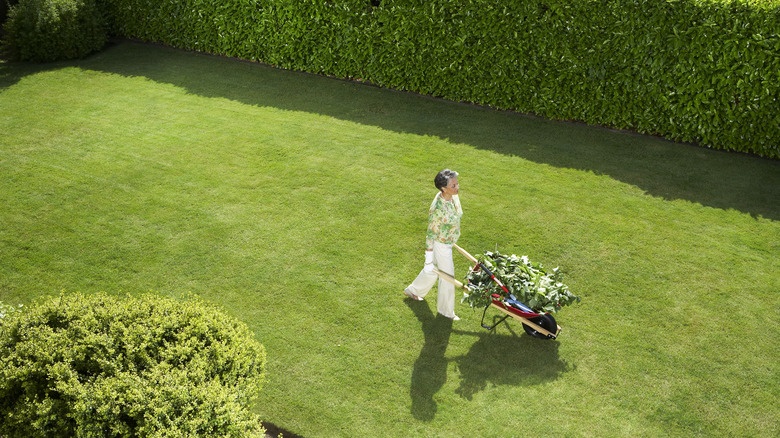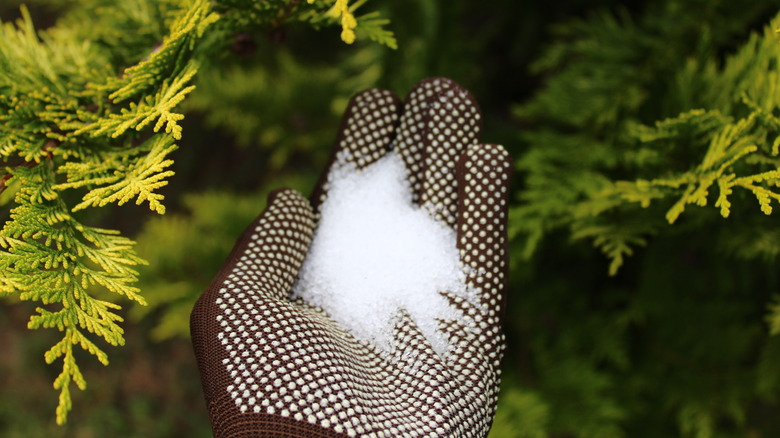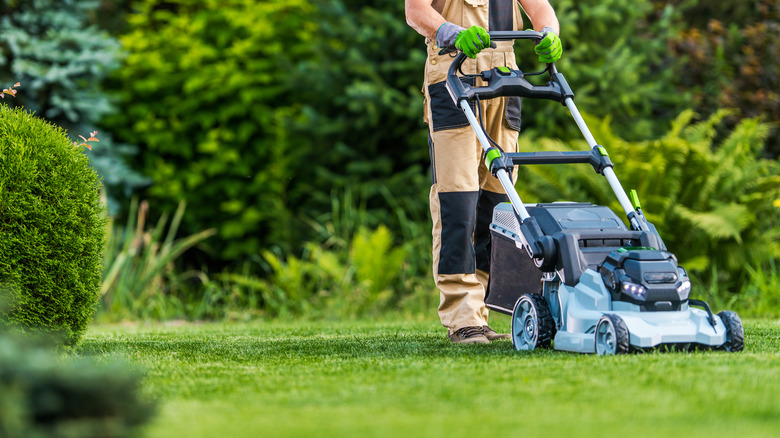This Unexpected Epsom Salt Hack Keeps Your Lawn Bright Green
Keeping your lawn healthy and green can take a lot of trial and error with testing out watering schedules and different fertilizers. However, if you want to give your lawn a little extra boost without breaking the bank, you can always turn to Epsom salt. Epsom salt, despite its name, is not actually a salt and is instead a naturally forming mineral made from magnesium and sulfate. Because there is no salt in Epsom salt, it is completely safe to use in your yard or garden. It can even be beneficial, as magnesium is an essential component in creating chlorophyll, which is what gives grass its green color, per the University of Florida.
However, despite Epsom salt being great when added in small amounts to most lawns, it is important to know that adding too much magnesium (in the form of Epsom salt) to your lawn can hurt it by making it difficult for your grass to intake calcium — an essential nutrient for plant structure. This is why it is often recommended that you perform a soil test first to see if your lawn needs magnesium before adding the salt. If your soil is sandy or naturally acidic, then it likely does need magnesium and would benefit from added Epsom salt.
Methods for adding Epsom salt to your yard
Once you have decided that your lawn could use a little extra magnesium or sulfur, you can start looking at how you'd like to apply Epsom salt to your grass. There are a few different methods for adding Epsom salt to a lawn, but no matter which way you choose, you should always add it in the fall or spring because adding the salt in summer will help your weeds as much as it helps your grass. It's also a good idea to add Epsom salt when laying new grass seeds because the minerals in the salt can aid in the germination process.
When applying Epsom salt to your lawn, you can either add it dry or first dissolve the salt in water and then add it to your grass. When adding it dry, the best method is to sprinkle the Epsom salt on top of your grass and then water the lawn to help the salt soak into the soil. Keep in mind that you should only add around one cup to half a pound of Epsom salt per 100 square feet of grass (via Suburban Lawn Sprinkler Co). To help with seed germination, the recommended method is to mix one tablespoon of Epsom salt in a gallon of water and then pour the mixture over the recently seeded area.
More ways to keep your lawn green
Other than getting your fertilizing and watering schedule perfect and adding some Epsom salt to your grass when it's planted and at the beginning of each growing season, there are a few more things you can do to ensure that your grass is as green as it can be.
First, while you may have already figured out how often your grass needs to be watered, what you may not have thought of is when the best time to water your grass is. In fact, the time of day you water your lawn is quite important for preventing fungal diseases that can quickly create unsightly brown patches. To prevent turf fungus, the best time to water your lawn is in the early morning before 10 a.m., while the worst time is in the evening or at night.
Furthermore, if you are doing everything right but still have grass that looks brown, you may want to take a look at the blades of your lawnmower. The blades on a lawnmower lose their sharpness over time. Dull blades tend to tear grass blades instead of cutting them which can cause the top of your lawn to turn brown from the damage.


